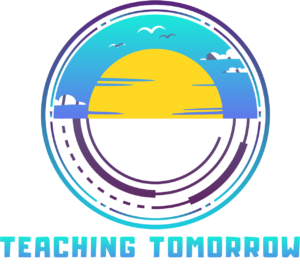
Leadership is a dynamic and multifaceted concept that goes beyond mere management. It’s about empowering individuals and teams to reach their fullest potential. In today’s fast-paced business environment and personal growth contexts, leadership and empowerment are more interconnected than ever. Enter the role of a Leadership and Empowerment Facilitator—someone dedicated to cultivating self-awareness, developing leadership skills, and fostering a culture of empowerment that benefits both individuals and organizations.
Core Responsibilities of a Leadership and Empowerment Facilitator
The primary responsibility of a Leadership and Empowerment Facilitator is to guide individuals and teams through a transformative process that enables them to discover their strengths, enhance their self-awareness, and develop crucial leadership skills. This process often begins with self-reflection, where facilitators help clients identify their values, goals, and areas for improvement. Through targeted exercises and feedback, they assist in building emotional intelligence, a cornerstone of effective leadership. By fostering an environment of trust and openness, facilitators encourage participants to take ownership of their leadership journey, which is essential for personal and professional growth.
Moreover, these facilitators are adept at teaching essential leadership qualities such as decision-making, communication, and problem-solving. They help individuals and teams navigate complex situations with confidence and clarity. Empowerment strategies play a significant role in their approach, which includes setting clear goals, encouraging accountability, and providing support that aligns with both personal aspirations and organizational objectives. This holistic approach ensures that leadership development is not just a short-term endeavor but a sustained process that benefits everyone involved.
Key Skills and Competencies for a Successful Facilitator
To be effective, a Leadership and Empowerment Facilitator must possess a unique set of skills and competencies. One of the most critical is effective communication. Facilitators need to clearly convey ideas, engage participants, and manage group dynamics, which requires a deep understanding of how to listen, question, and reflect. Emotional intelligence is another vital competency, enabling facilitators to understand and manage emotions both in themselves and in others. This skill is particularly important when addressing sensitive topics such as conflict resolution and team dynamics.
Conflict resolution is yet another key area where facilitators shine. They help individuals and teams address disagreements constructively, turning potential friction into opportunities for growth. Adaptability and creativity are also crucial; no two organizations or groups are the same, and facilitators must tailor their approach to meet the unique needs of each client. This might involve integrating innovative methodologies or drawing on various leadership theories to suit specific contexts. Finally, a deep understanding of behavioral sciences helps facilitators bridge the gap between theory and practice, enabling them to apply psychological insights to real-world leadership challenges.
Benefits of Engaging a Leadership and Empowerment Facilitator
Engaging a Leadership and Empowerment Facilitator offers numerous benefits, both for individuals and organizations. For individuals, it means personal growth, increased self-confidence, and improved career opportunities. Facilitators work closely with clients to identify their leadership potential and create actionable plans to develop it. This can result in enhanced decision-making abilities, better communication skills, and a stronger sense of accountability. In essence, individuals become more empowered to navigate challenges and seize opportunities that come their way.
For teams, the impact is equally significant. A facilitator fosters a collaborative and inclusive environment where team members can freely share ideas and work towards common goals. This not only enhances team cohesion but also improves problem-solving abilities and boosts overall performance. For organizations, the benefits extend beyond individual development. A Leadership and Empowerment Facilitator can help shape company culture, reducing turnover and fostering a more engaged workforce. This alignment between personal and organizational goals ensures that everyone is working towards a shared vision, enhancing both business success and employee satisfaction.
How a Facilitator Measures Success
Success for a Leadership and Empowerment Facilitator is not just about reaching predefined benchmarks; it’s about the lasting impact on individuals and teams. Measuring success can be qualitative as well as quantitative. For instance, improvements in leadership behaviors, team dynamics, and employee engagement are key indicators of success. Surveys, interviews, and assessments can help gauge these changes, but so can less formal methods like observing improved communication or problem-solving within teams. Long-term impact is also a critical measure of success. When individuals continue to apply what they’ve learned and continue their leadership growth independently, the facilitator’s impact is clearly evident.
Challenges Faced by Leadership and Empowerment Facilitators
Despite their expertise, Leadership and Empowerment Facilitators face several challenges. One of the most common is resistance to change. Many individuals and teams may be hesitant to step outside their comfort zones or challenge established norms, making buy-in from leadership essential. Facilitators must develop strategies to overcome this resistance, which often involves clear communication, building trust, and showing the tangible benefits of the proposed changes. Balancing the individual needs of clients with the broader organizational objectives is another challenge. Facilitators need to maintain a delicate balance, ensuring that personal development does not detract from business goals but rather complements them.
Maintaining credibility and relevance is also crucial. As leadership theories evolve, facilitators must stay current with new research and methodologies. This might mean continuously updating their skills and knowledge base, attending conferences, or engaging with professional networks. A facilitator’s ability to adapt and remain relevant ensures that their guidance remains effective and aligned with the latest leadership trends. These challenges, while significant, are opportunities for growth. They allow facilitators to refine their skills, enhance their expertise, and continue to make a meaningful impact on the leaders they serve.
FAQ
What qualifications should a Leadership and Empowerment Facilitator have?
A Leadership and Empowerment Facilitator typically holds a background in leadership studies, organizational behavior, psychology, or related fields. They often have certifications in coaching, facilitation, or other relevant areas. Experience in leadership roles and a proven track record of developing others are also essential.
How can one become a facilitator?
Becoming a Leadership and Empowerment Facilitator usually involves formal education and professional development. Key steps include earning a degree in a related field, gaining work experience, and pursuing certification in coaching or facilitation. Networking and continuous learning are also crucial to staying current in the field.
What’s the difference between a coach and a facilitator?
While both roles aim to develop leadership skills, a coach typically works one-on-one or with small groups to provide personalized guidance and support. A facilitator, on the other hand, often works with larger groups to create an environment where participants can learn from each other and engage in collaborative problem-solving. Facilitators focus more on group dynamics and fostering a collective learning experience.
How do facilitators tailor their approach to different organizations?
Facilitators tailor their approach by first understanding the unique culture, challenges, and goals of each organization. They use this information to design programs and exercises that align with organizational objectives and address specific needs. This might involve adapting leadership theories, integrating new technologies, or incorporating specific cultural norms into their training programs.





